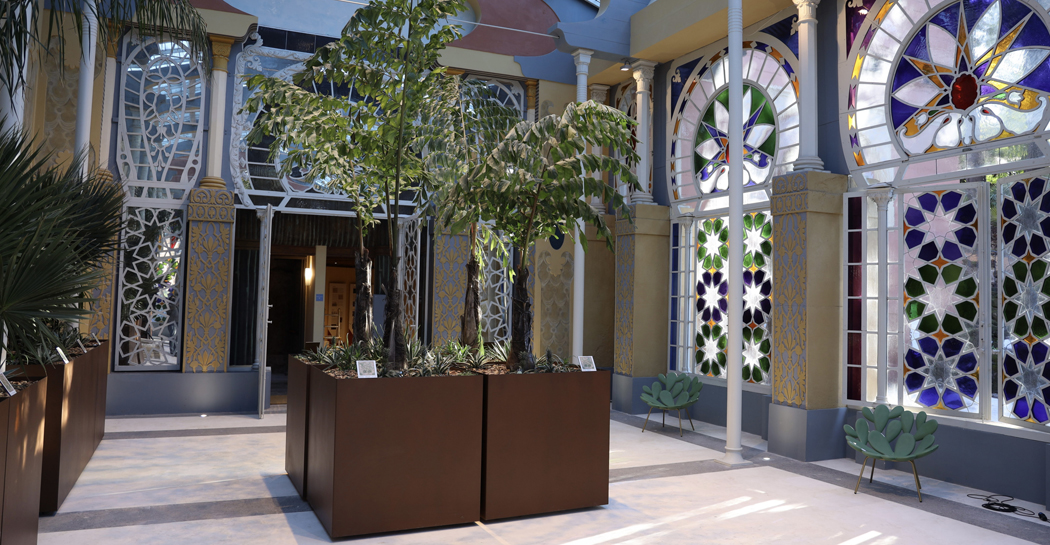The exhibition project
As a complement to the architectural restoration, the complex was fitted out to make it accessible and to evoke, as far as possible, the atmosphere of wonder that welcomed Prince Torlonia's guests.
The work involved the interior of the Serra, the entrance hemicycle, the external area in front of it and the area of the valley behind it with the remains of the artificial grotto dedicated to the Nimphae loci.

According to historical documents, the two areas were extremely different: the first was arid and sunny, with palms, agaves and aloes; the second was shady and humid, rich in water and vegetation. Jappelli's project took into account the relationship between architecture and landscape, so the Greenhouse, inspired by Islamic models, was set in an environment typical of hot, arid climates; the artificial Grotto, on the other hand, was to evoke the wooded ravines inhabited by the Nymphs.
In order to reproduce the arid landscape, the inner and outer space of the Greenhouse was populated with palms, agaves, aloes and pineapples, with varieties chosen from those already in use at Jappelli's time, some of which were placed in containers with wheels for movement in case of events.
In the area of the artificial grotto, of which only a few but fascinating ruins remain, since it is not possible to reconstruct the roof or the fittings designed by Jappelli, an attempt has been made to evoke the atmosphere, restoring the streams of water that feed the two small lakes that still exist, scenically lit. Around the valley, a carpeted border of "berry bushes" increases the birdlife and biodiversity and marks the boundary of the passage for users.
An assembled wooden floor, placed both in front of the teaching room and between the tower and the ponds, allows the use for events.











































